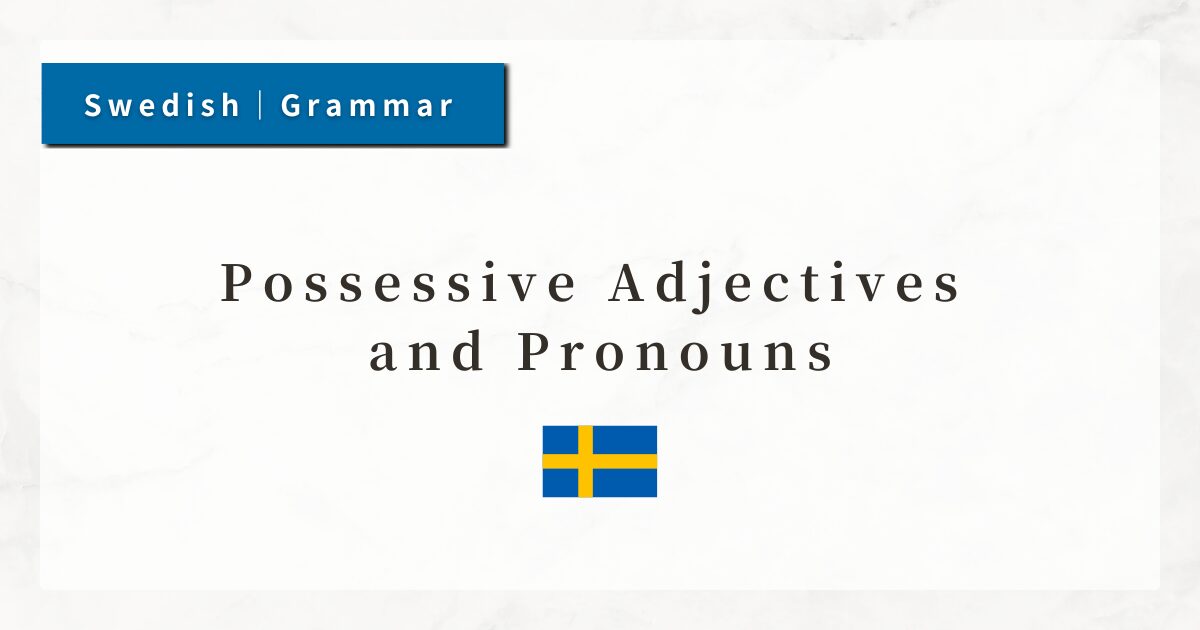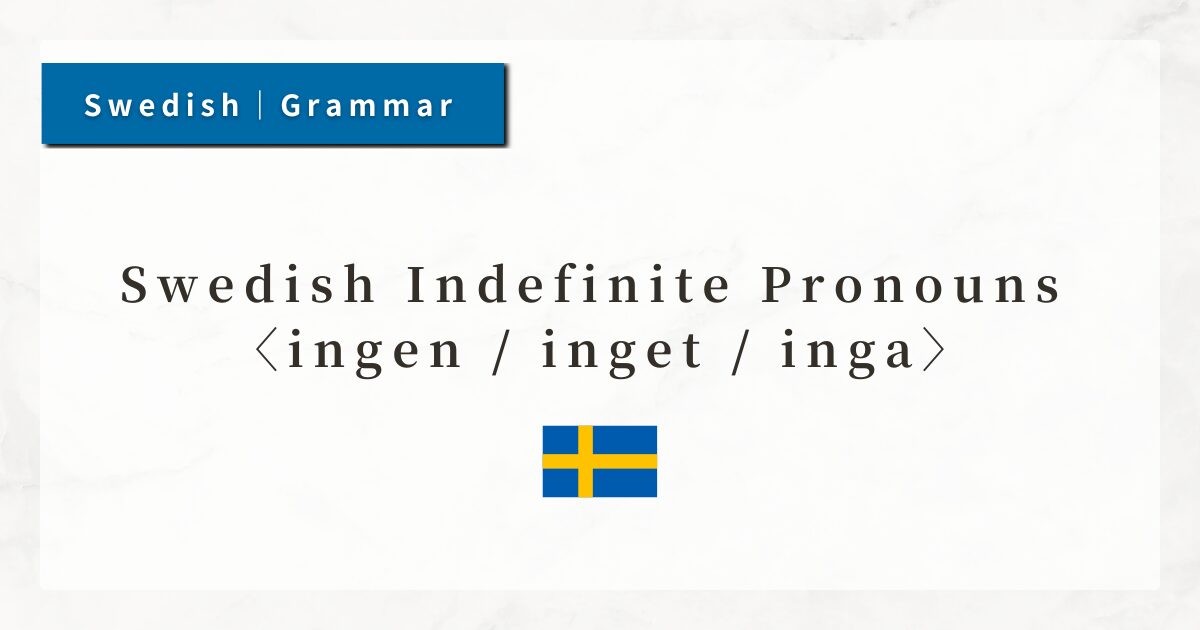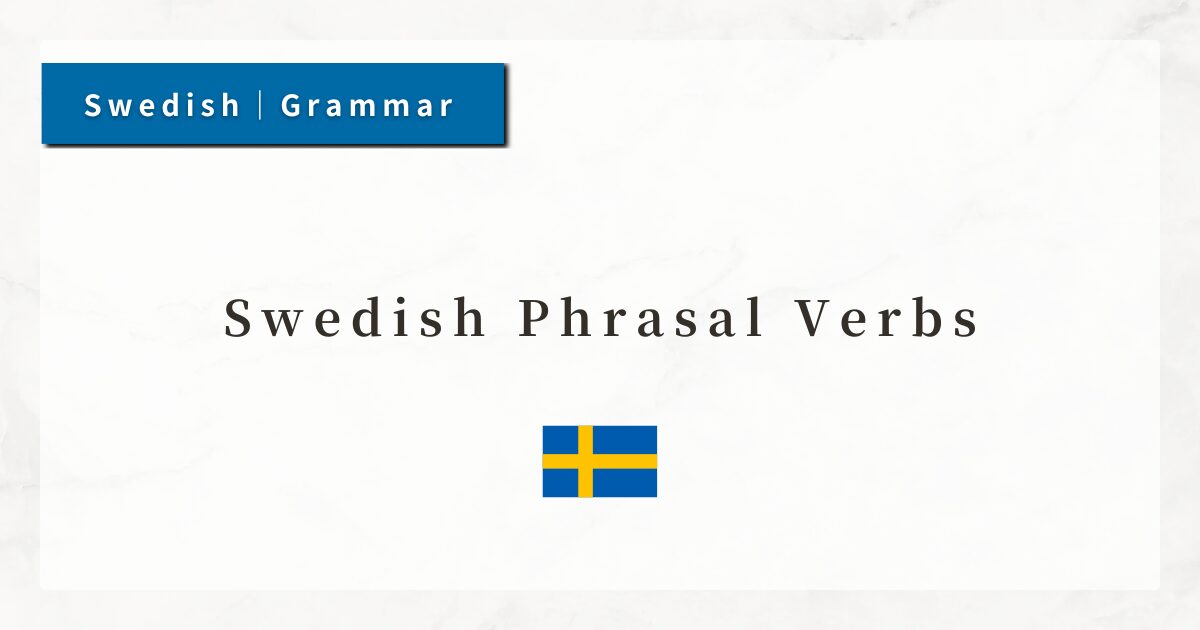#11 Possessive Adjectives and Pronouns|Usage and Differences

When expressing ownership—such as “my,” “your,” or “mine”—Swedish uses possessive adjectives (min, din, etc.) and possessive pronouns (min, mitt, mina, etc.).
Like the English forms my / mine, these words change depending on the gender (common vs. neuter) and number(singular vs. plural) of the noun they refer to.
In this lesson, I explain the basics of Swedish possessive adjectives and pronouns, their usage, and the key points to keep in mind.
1. The Basics of Possessive Adjectives and Possessive Pronouns
In Swedish, when I say “my book,” “his house,” or “her bicycle,” I use possessive adjectives (min, din, hans, etc.) or possessive pronouns (min, mitt, mina, etc.).
These expressions correspond to English words such as my / your / mine / his / her. The main difference is that in Swedish, their form changes according to the gender (common/neuter) and number (singular/plural) of the noun.
| Term | Role | English Equivalent | Example |
|---|---|---|---|
| Possessive adjective | Placed before a noun to indicate ownership | my, your, his | min bok (my book) |
| Possessive pronoun | Used without a noun to indicate ownership | mine, yours, his | Boken är min. (The book is mine.) |
In Swedish, possessive adjectives and pronouns generally take the same form. However, their role in the sentence differs: adjectives are used with nouns, while pronouns are used alone.
2. Possessive Adjectives
A possessive adjective is placed before a noun to indicate ownership—for example, “my book” or “your dog.”
In Swedish, the form changes depending on the gender and number of the noun.
Variation by gender and number (1st person singular):
| Gender / Number | Swedish | Translation |
|---|---|---|
| Common (en-word) | min bok | my book |
| Neuter (ett-word) | mitt hus | my house |
| Plural | mina böcker | my books |
Thus, even though the meaning is “my…,” the form changes (min / mitt / mina) depending on whether the noun is book, house, or books.
Table: Possessive Adjectives
| Subject | Common noun (e.g., bok) | Neuter noun (e.g., hus) | Plural noun (e.g., böcker) |
|---|---|---|---|
| jag (I) | min bok | mitt hus | mina böcker |
| du (you) | din bok | ditt hus | dina böcker |
| han (he) | hans bok | hans hus | hans böcker |
| hon (she) | hennes bok | hennes hus | hennes böcker |
| vi (we) | vår bok | vårt hus | våra böcker |
| ni (you plural) | er bok | ert hus | era böcker |
| de (they) | deras bok | deras hus | deras böcker |
3. Possessive Pronouns
A possessive pronoun is used when the noun is omitted, expressing “mine,” “yours,” and so on.
- Den här boken är min.
(This book is mine.) - Är det huset ditt?
(Is that house yours?) - Barnen är våra.
(The children are ours.)
A typical pattern is that possessive pronouns appear after the verb är (to be).
Table: Possessive Pronouns
| Person | Common (en-word) | Neuter (ett-word) | Plural |
|---|---|---|---|
| jag (I) | min | mitt | mina |
| du (you) | din | ditt | dina |
| han (he) | hans (no change) | hans | hans |
| hon (she) | hennes (no change) | hennes | hennes |
| vi (we) | vår | vårt | våra |
| ni (you plural) | er | ert | era |
| de (they) | deras (no change) | deras | deras |
4. Grammar Notes and Usage Tips
4-1. Match the Gender and Number of the Noun, Not the Owner
In English, we say his book / her house, considering the owner’s gender. In Swedish, the form depends on the noun’s gender.
- min bok (my book: bok is an en-word)
- mitt rum (my room: rum is an ett-word)
- mina böcker (my books: plural)
Being able to identify the gender and number of a noun is essential for using possessive forms correctly.
4-2. Do Not Confuse Adjectives and Pronouns
Both of the following sentences refer to “my book,” but the usage differs:
- Det här är min bok.
(This is my book.)
→ possessive adjective (with noun) - Boken är min.
(The book is mine.)
→ possessive pronoun (noun omitted)
5. Summary
- Swedish ownership is expressed through possessive adjectives (before a noun) and possessive pronouns (in place of a noun).
- Forms like min / mitt / mina change depending on the gender and number of the noun.
- 3rd person forms (hans / hennes / deras) remain the same regardless of the noun.
- Mastering possessive forms requires recognizing patterns of usage.
- Always identify the gender and number of the possessed noun to use the correct form.




